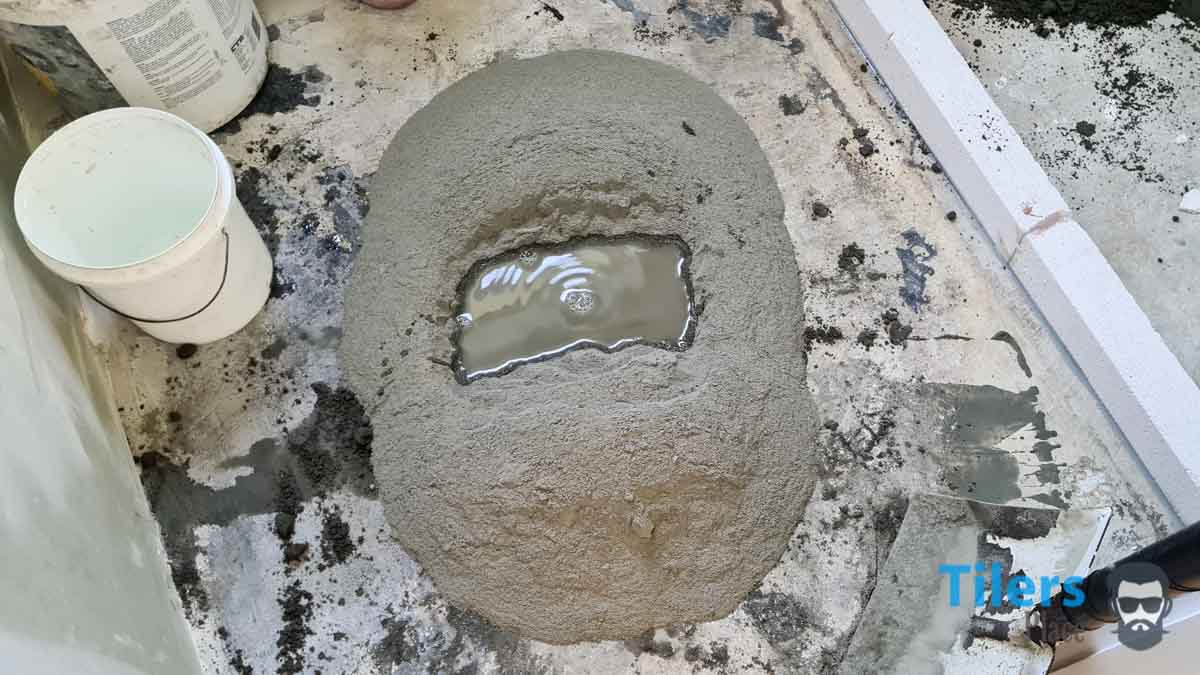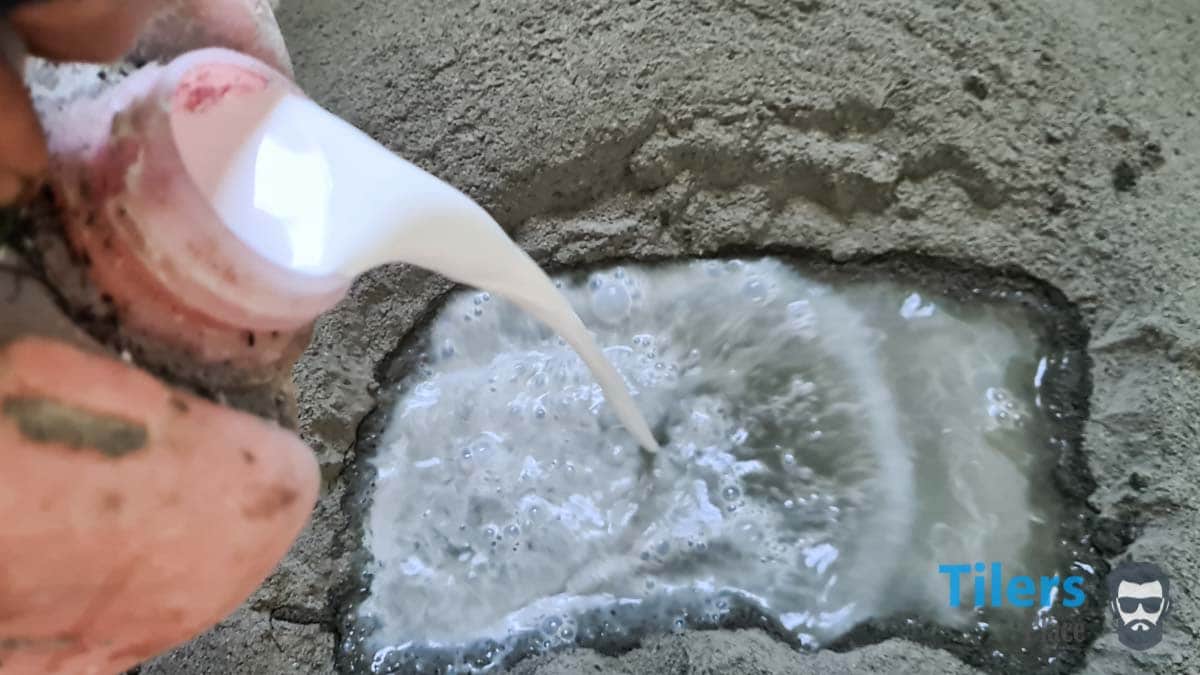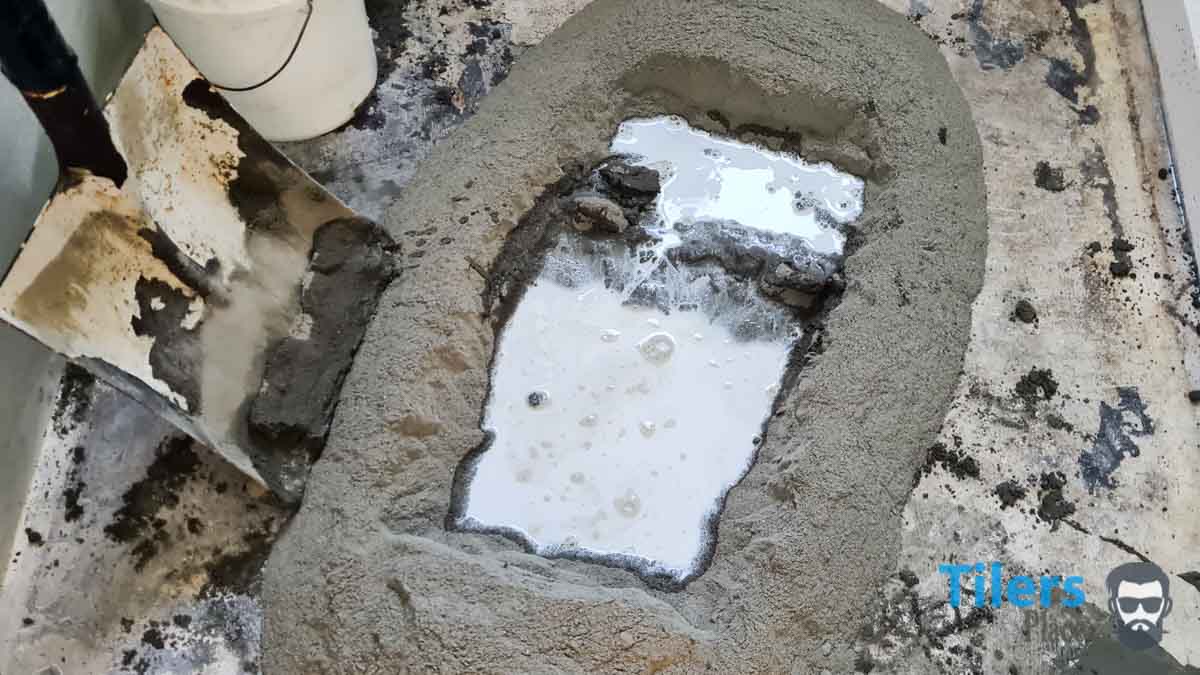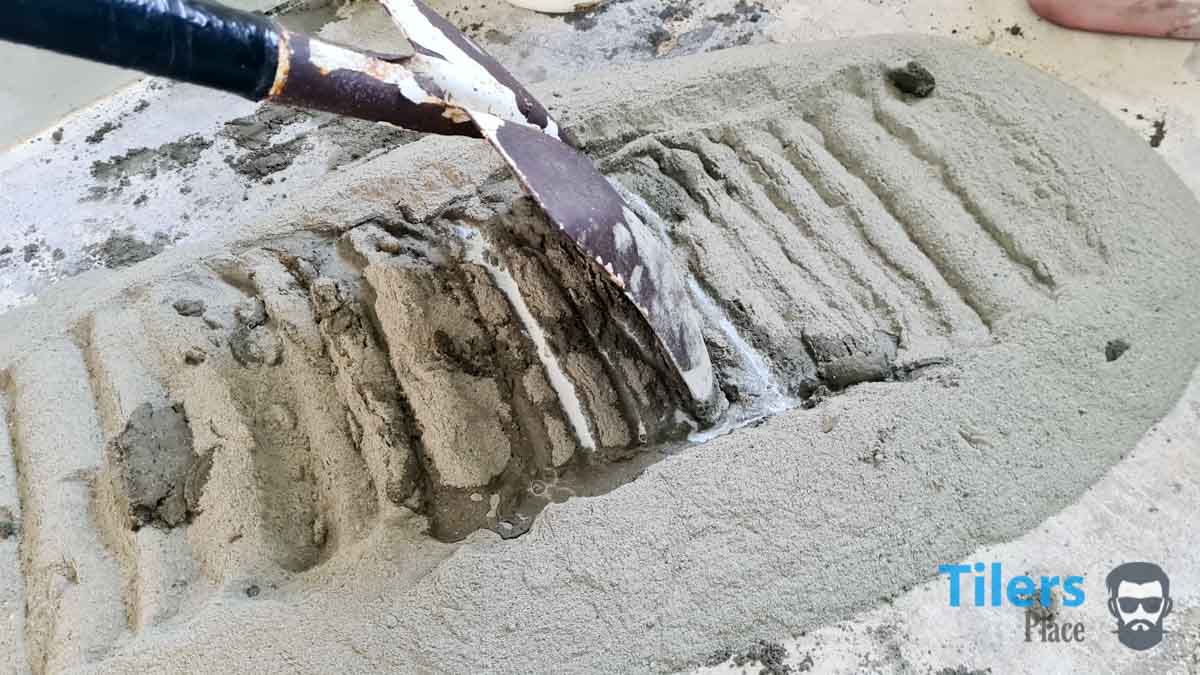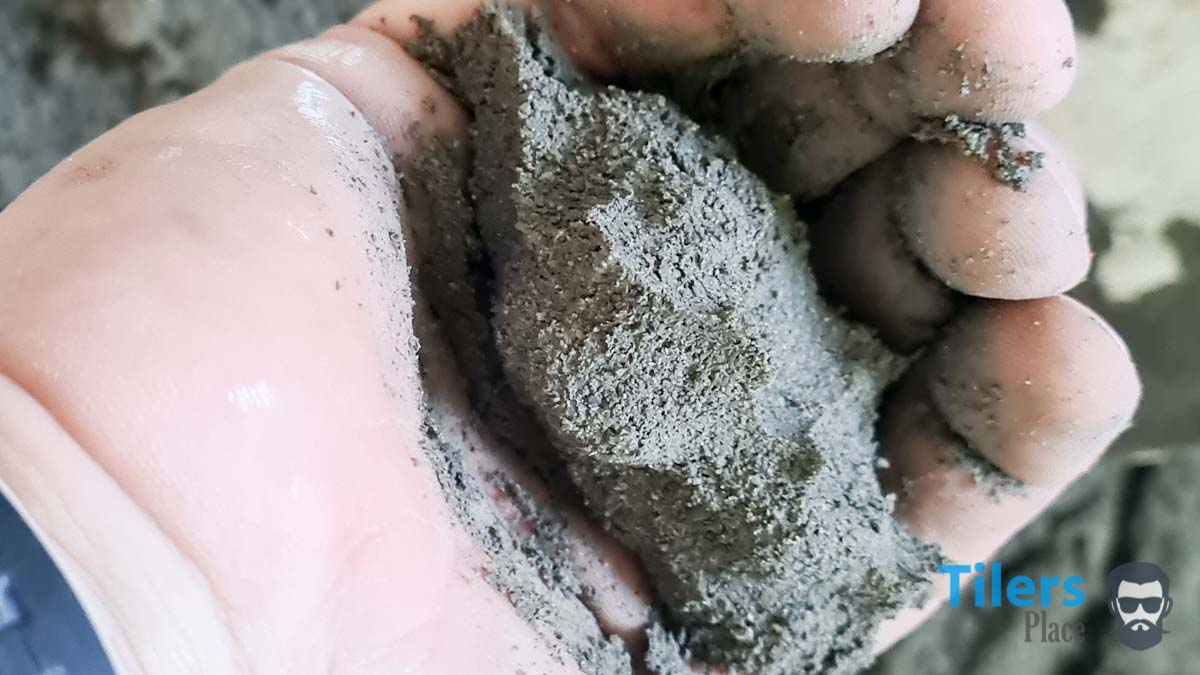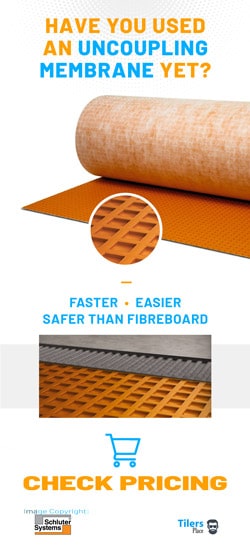Table Of Contents
How To Mix Tile Screed/Mud
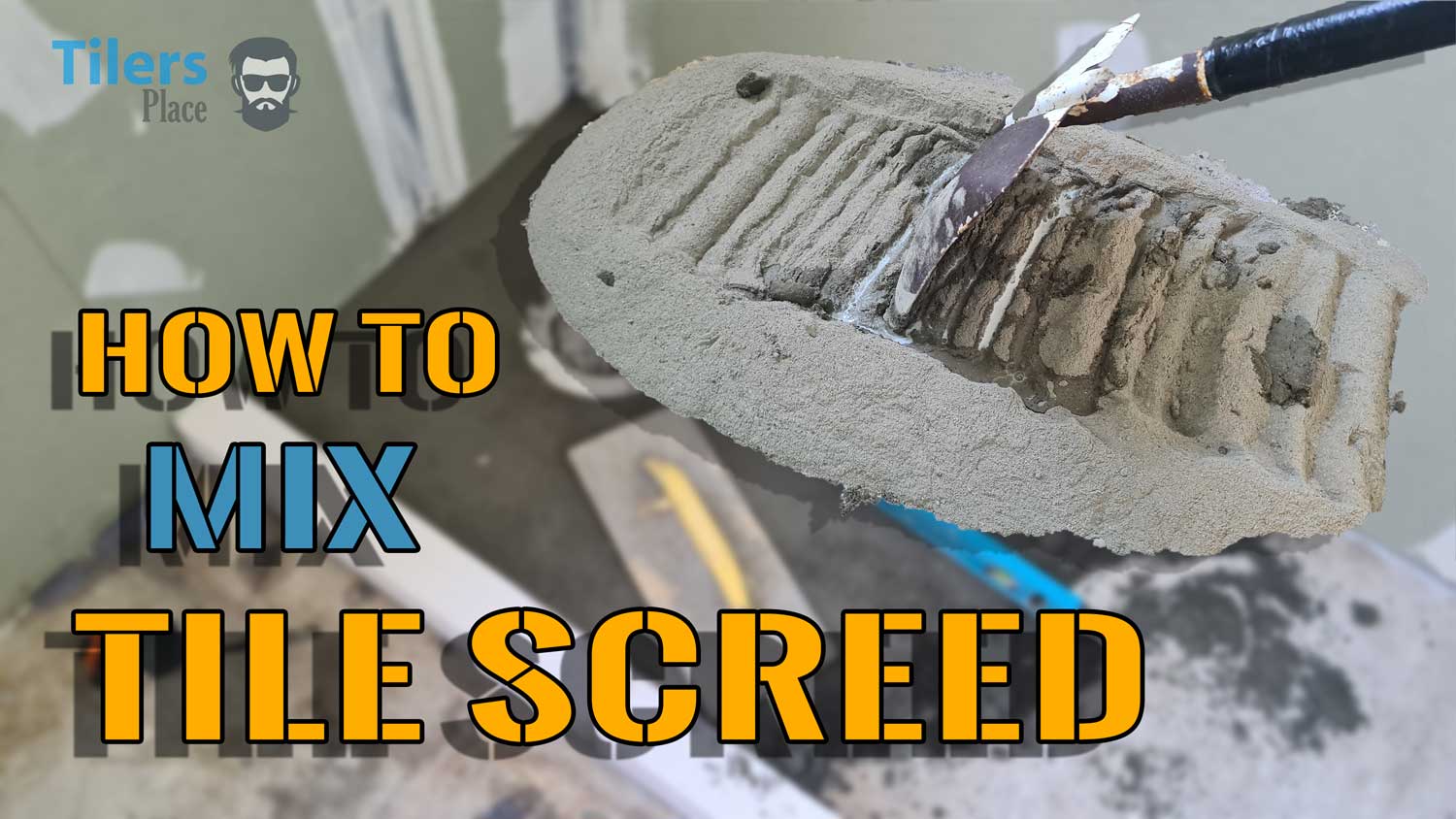
Tile screed is also known as: dry-pack mortar, mud, thick bed mortar, thick bed tile mortar
Tile Screed, mud, dry-pack mortar is the most basic and traditional method of leveling surfaces for tile installation.
Whether you are creating your slope in a shower base, or leveling a large area that is completely uneven, tile screed is the cheapest and oldest method.
Today I’ll show you how this simple combination of sand and cement is mixed and made ready for installation.
Disclaimer: This is the method that I have been taught when I was learning. It’s never failed me nor the old dude that taught me the method. I understand there are other methods – this article shows the one I use.
Tools Required
Large Shovel
5Lb/20kg Bucket
Small Pail
How To Mix Tile Screed
You’ll be mixing your screed directly on the floor. (Or you can make a mortar box out of wood to contain the mix and keep everything super tidy.) Ideally you’ll have a surface like concrete to mix on but if you don’t, you can mix on a large piece of plywood or similar.
Pour your dry powder like cement and sand into one large pile. You’ll want to mix your screed in manageable batches. Don’t make too much at once otherwise you’ll have difficulty forming the mud before it hardens.
We’ll call this the “mortar mountain.”
With all your dry powders poured onto a large pile, use your shovel to open up a hole in the middle of the dry powder. In that hole you’ll pour in some water.
(Optional Step) I like to add an acrylic additive at this stage. It helps with adhesion to the substrate that I am covering. Most acrylic tile primers can be used as well.
You can also add concrete fibers to help prevent any cracking during the drying process. Anything that has water in it shrinks whilst it cures, these fibers help prevent that.
There is no set amount of water I pour in, usually enough to not go over the top of my hole. If you are mixing to a strict mixture, use your pail and pour in one full measure.
Once I have my liquid, I extend the sides of the water hole. I place the shovel inside the hole and drag outwards. I do this carefully so that no water escapes the sides of the mortar mountain.
The aim is to be as clean as possible. Cement water escaping and dribbling all over the floor is not ideal, especially in a clients home.
Now we can finally begin mixing everything.
Since we have a lot of liquid, the idea is to fold in the sides of the mountain until all the water disappears. This this slowly and allow the dry powder to absorb the water, otherwise it’ll slop over and make a mess.
With the hole closed up, you can start “folding” the mix. Essentially you use the tip of your shovel to knead the mixture.
Now starts the fun part. Good ol’ shovel work. Shovel up a full load of mix and dump it on top of the mixture. Keep going until you’ve shifted the entire mountain atleast 3 times.
During this mixing, you can add water to the mixture to obtain a proper mortar moisture level.
What is the ideal consistency of dry-pack mortar?
It’s easy to test if your mortar mix is the right consistency. Simply grab a clump in your fist and press it together. If it holds together, it’s ready.
If it’s a wet mush that oozes between your fingers, it’s too wet. This will make it very hard to form your mud properly as it’ll stick to your float and not smoothen out properly.
Add more sand to dry out the mix and mix it properly.
A dry mix will not clump together and fall apart. This kind of mix can crack after it dries. Add more water and mix thoroughly.
That’s it. It’s not too difficult is it?
Now just go on and form your dry-pack screed and once you run out, make a new batch.
Common Dry Pack Mortar Questions
What is The Correct Mortar Bed Thickness?
According to the Tile Council of America, the correct thickness of tile mortar depends on where it is used.
Interior and Exterior Floors: 1.25″
Interior walls: 3/8–1 3/4″. The thickness will depend on which installation method you use.
Countertops: 3/4–1 1/2″ when working over a plywood base.
What Is The Correct Ratio For Mortar Bed Mixes?
A good mortar mix consists of four to six parts of clean sand to one part Portland Cement. Water is added to achieve the desired consistency and varies depending on the amound of dry ingredients added.

